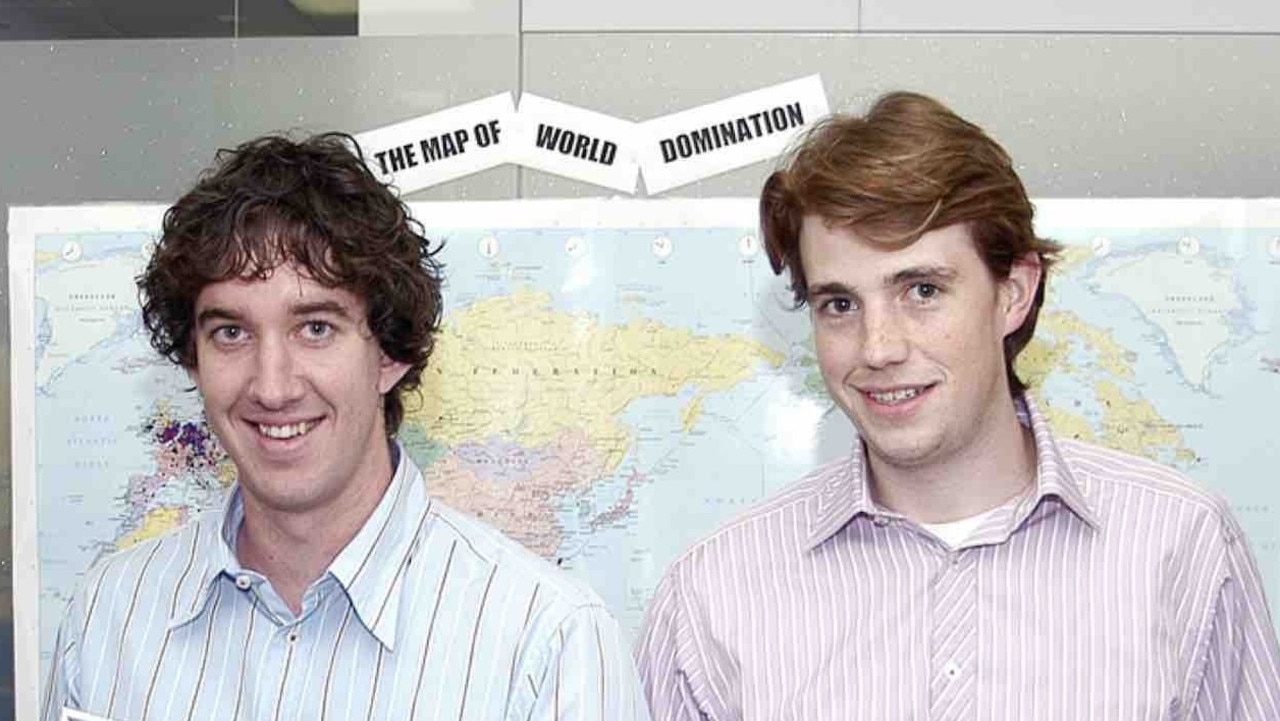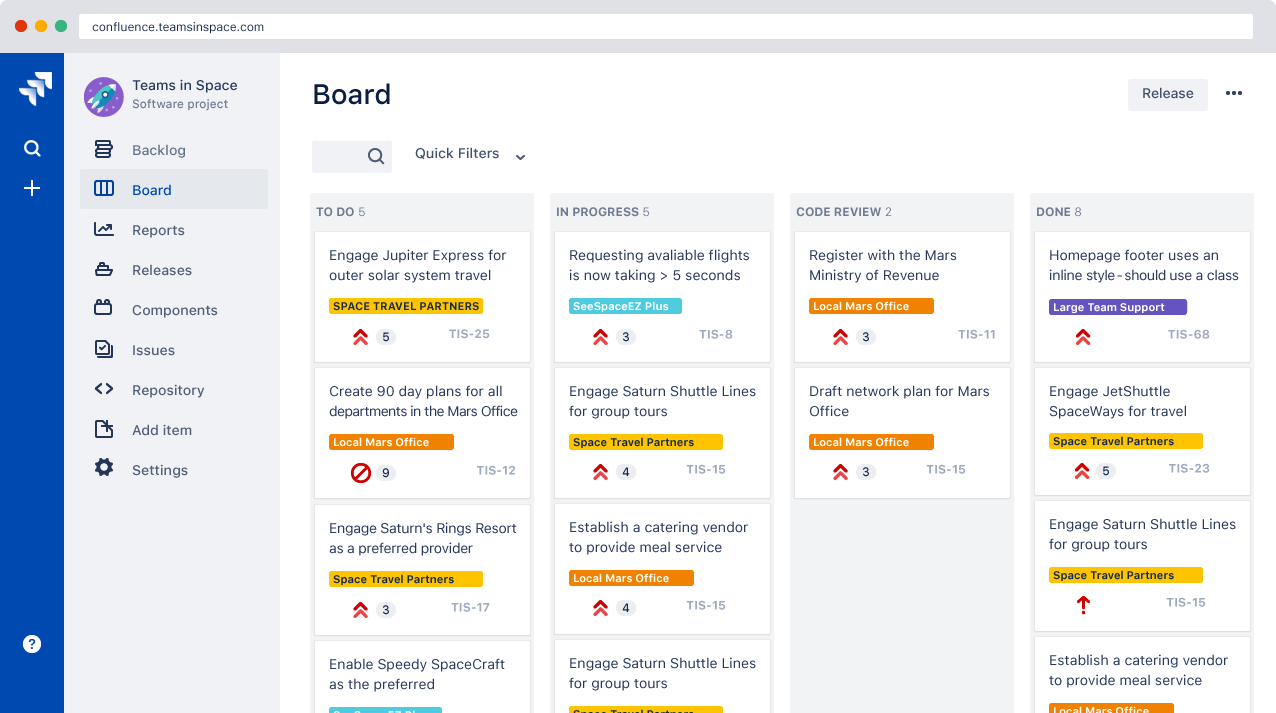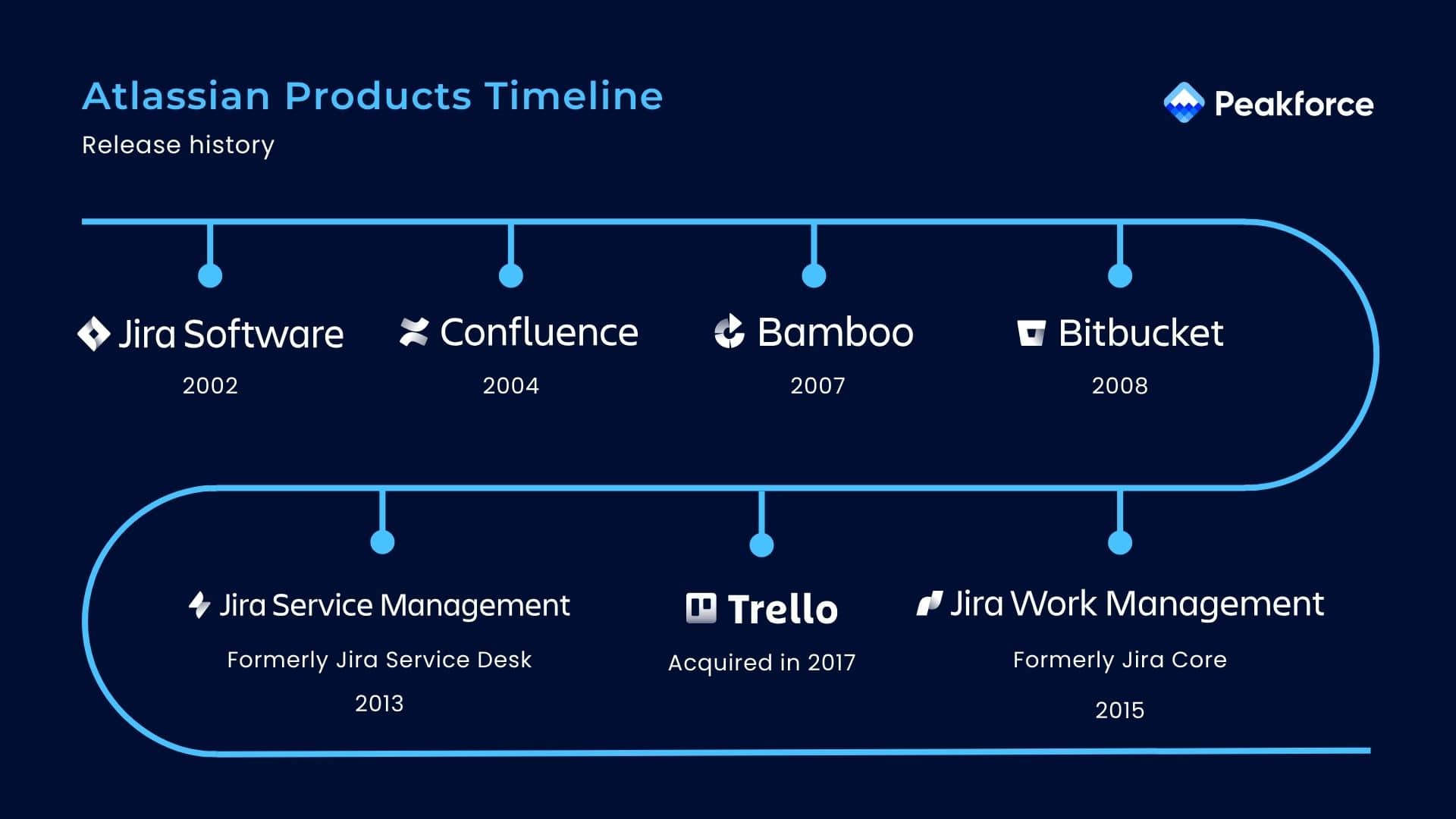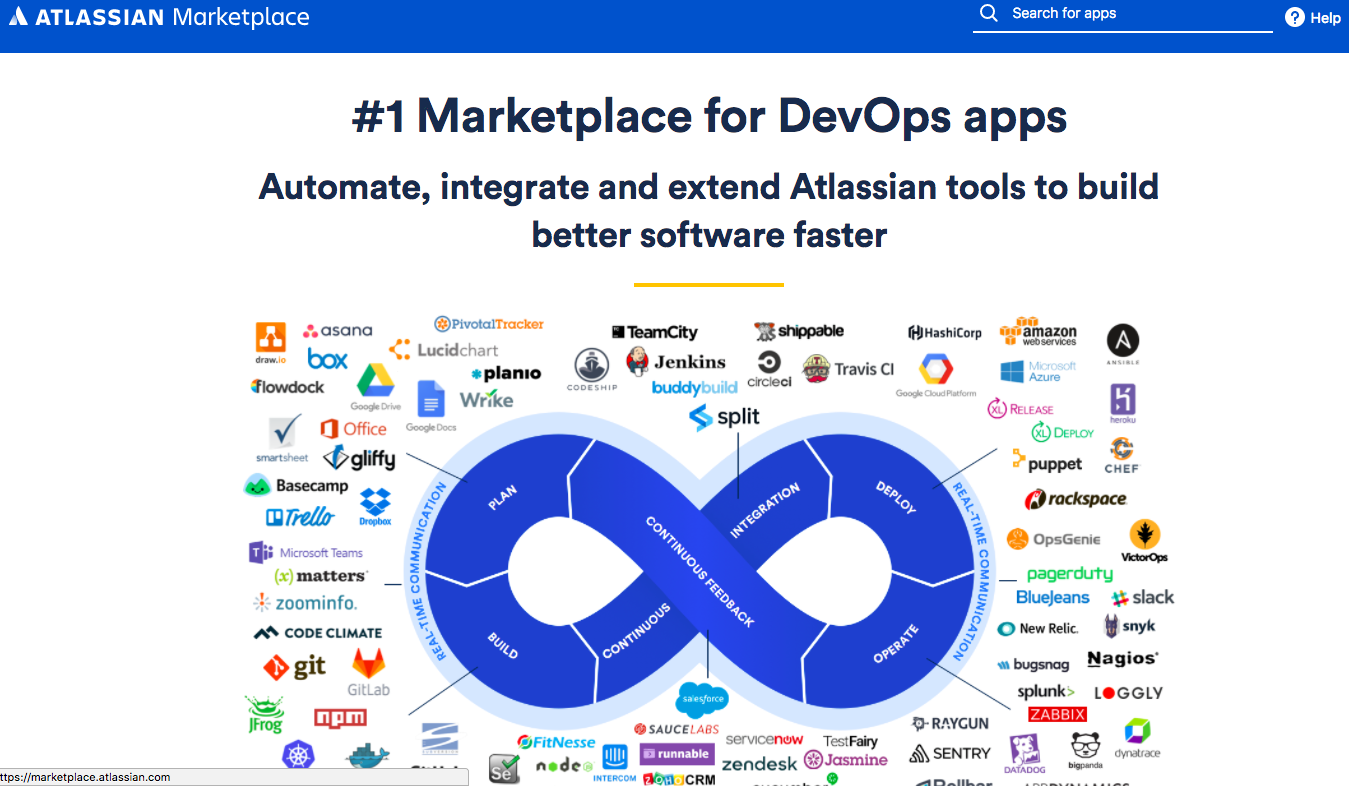Table of contents
Let’s get one thing straight: Atlassian didn’t start in some slick office with beanbags and kombucha on tap. It started with two kids in Sydney, a ten-grand credit card debt, and a burning desire to never have to wear a suit.
In 2002, while everyone else was still trying to revive dot-com pipe dreams, Mike Cannon-Brookes and Scott Farquhar were busy not being employees. Their mission? Don’t get a real job. Their method? Build a product that solves an actual problem for other nerds like them.
Fast-forward twenty years. They’ve built a company worth $50B, helped redefine how teams around the globe collaborate, and done it all without ever cold-calling a customer. No glitzy VC blitz. No Silicon Valley worship. Just relentless product obsession, dry wit, and a culture that ran on "no bullshit" as its official fuel.
This isn’t just a startup story. It’s a rebellion in code. It’s the GarageBand equivalent of a B2B software empire.
Two Nerds Walk into a University...
Mike Cannon-Brookes and Scott Farquhar weren’t your typical entrepreneurial wunderkinds. They weren’t coding out of garages in Palo Alto or sipping macchiatos in SoMa. They were two students at the University of New South Wales in Sydney who just didn’t want to work for someone else.
Mike, fresh off a degree in IT, fired off a mass email: Anyone want to start a business? Scott said yes. Not because he had some grand vision. He just wanted to match the salary of a graduate job: $48K AUD. That was the target.
They didn’t have a business plan. Or funding. Or even a name people could pronounce. What they had was disdain for bureaucracy, decent technical chops, and a shared allergy to ties.
What followed was scrappy, uncertain, and kind of beautiful.

Birth of a Beast: Jira, Fax Machines, and Product-Market-Freaking-Fit
The Agency Nobody Dreamed Of
Before they were building billion-dollar software, Mike and Scott were running what was essentially a glorified tech support agency. Their job? Help other businesses manage customer service chaos. It was unglamorous. Endless spreadsheets, broken ticket systems, and bug trackers from the Jurassic era.
It didn’t pay much. But it paid enough to keep their laptops open.
Jira: Built in Frustration, Not Foresight
Eventually, the pain of using existing tools got too much. They weren’t planning to build a product. They just needed something that worked. So they built Jira.
It was ugly. It was basic. But holy hell, it did the job.
Bug tracking, task assignments, team collaboration, everything felt duct-taped together with systems like Bugzilla, which were clunky, rigid, and about as user-friendly as a fax machine.
Jira wasn’t glamorous. But it was built by developers, for developers. It allowed teams to log bugs, create tasks, assign issues, track progress, customize workflows, and collaborate without losing their sanity. It was flexible. It scaled. And unlike what was on the market, it didn’t assume every team worked the same way.
They named it after "Gojira," the original Japanese Godzilla, because developers love nerdy in-jokes, and also because Jira was designed to smash the crap out of Bugzilla, which was the clunky incumbent at the time.
This wasn’t innovation. This was survival.

The Fax Heard ’Round the World
Then it happened. A fax arrived? Yes, a literal, analog, click-whirrrrr fax machine buzzed to life. It was a purchase order. From American freaking Airlines.
No sales pitch. No cold email. No founder hustle deck. Just: “Hey, we like this Jira thing. Here’s some money.”
Imagine the scene. Two 20-something Australians in a tiny Sydney office (read: probably one desk and a half-dead plant), staring at a fax machine like it was a portal to another universe. One minute you're building something for yourself, the next you're accidentally solving problems for a Fortune 500.
That fax? It was their first real customer. And it changed everything.
Product-Market Fit That Punched Them in the Face
Most founders chase product-market fit like it’s Bigfoot. Blurry, mythical, and always just out of frame. Mike and Scott didn’t have to chase it. It kicked their door down.
They weren’t doing user interviews or iterating with feedback loops. They had a simple feedback system: If it sucked, they fixed it. If it worked, they shipped it. If someone sent money, they paid attention.
That fax was more than validation. It was oxygen. And the message was clear: keep going.
The Accidental Go-To-Market Strategy
Suddenly, they had proof that other companies, big ones, needed what they’d built. They hadn’t even tried to sell it yet. No ad campaigns. No booth at TechCrunch. Just a downloadable zip file, a basic webpage, and a license key generator.
Their "go-to-market" wasn’t a plan. It was an accident. And it worked.
That early traction became Atlassian’s unofficial strategy: Build something useful, let users discover it, and don’t screw up the experience.
It was the first spark of what would become one of the most effective product-led growth machines in software history.
Confluence: Born to Kill the Intranet
In 2004, Atlassian was still a lean company running on caffeine and licensing revenue. Communication across distributed dev teams was already messy, and internal knowledge was scattered in emails, shared drives, and tribal memory. So, instead of buying some bloated corporate wiki, they built their own.
They called it Confluence. The idea was simple but radical at the time: give teams one central place to write, edit, and share content: meeting notes, documentation, project specs, roadmaps, all of it. No fancy interface, just powerful collaborative writing and fast search. You could think of it as “Google Docs meets an internal wiki, but built for grown-ups who code.”
It quickly caught on with technical teams, especially in companies with distributed engineers. By 2010, it wasn’t just a product. It was the glue that held companies together.
No Sales Team, No Problem: The Product-Led Punk Rock Era
Instead of hiring salespeople to "drive revenue," they let the product do the talking. They put Jira online, made it easy to try, and easier to buy.
Engineers loved it. And engineers, when they find something that actually works, don’t shut up about it. Word-of-mouth kicked in. Suddenly, Jira was popping up in places like NASA and LinkedIn—and not because anyone got flown out to pitch.
Culture Built by Misfits (Who Actually Shipped Stuff)
Culture isn’t a plaque in the lobby or a line in your onboarding slideshow. It’s what people do when nobody’s watching, and Mike and Scott understood that early.
They didn’t want to build a company that felt like a company. They wanted to build a place where smart people could do great work without drowning in politics or pretending to be someone else.
So they wrote it down. Not in HR speak, but in plain language:
"Open company, no bullshit." "Don’t #@!% the customer." "Build with heart and balance."
These weren’t cheeky slogans designed to go viral on LinkedIn. They were operational guardrails. They were baked into how decisions got made, how feedback got shared, and how teams were empowered to take big swings without fear.
The result? A culture that didn’t just attract brilliant misfits, it unleashed them.

Take ShipIt Days. Once a quarter, every employee was given 24 hours to drop what they were doing and build whatever they wanted. No rules, no approvals, just pure experimentation.
It wasn’t a gimmick. It was a bet: give people autonomy and they’ll create value.
And they did. Jira Service Management, one of Atlassian’s most successful products, was born during one of those hackathons. Not in a product roadmap meeting. Not from a consultant’s deck. From an internal sprint that gave space for curiosity.
It wasn’t luck. It was cultural design.
Developing Insane Products

Bitbucket: GitHub for Teams, With a Slight Twist
By 2010, Git was taking over version control. Atlassian saw the writing on the wall: developers needed a collaborative, cloud-based code repo that played well with Jira and Confluence.
Enter Bitbucket.
Originally built by an independent team and launched in 2008, Atlassian acquired Bitbucket in 2010. At the time, GitHub was already gaining steam, but Bitbucket focused on private repositories and tight integration with Atlassian’s tools. That made it especially appealing to larger engineering teams who needed more control, more permissions, and less public exposure.
Over the years, Bitbucket became Atlassian’s dev-centric beachhead in the CI/CD and DevOps space. It wasn’t trying to win the hearts of indie open-source developers—it was quietly powering thousands of engineering departments behind the scenes.
Trello: A Surprise Hit With a Massive User Base
Trello wasn’t built by Atlassian. It was born inside Fog Creek Software (now Glitch), launched in 2011 at TechCrunch Disrupt as a fun visual way to manage projects. It used columns and cards on boards. Think sticky notes, but digital, collaborative, and oddly satisfying to drag around.
Trello exploded in popularity, especially with non-technical users. Marketers, event planners, startup teams, teachers. People who didn’t care about Git branches or Agile rituals suddenly had a way to organize their chaos.
Atlassian acquired Trello in 2017 for $425M. Critics initially questioned the price tag, but it was a power move. Trello gave Atlassian a massive top-of-funnel engine and a foothold in the “lightweight” productivity space.
They didn’t smother it. They let it be Trello, while gradually integrating login systems, adding cross-product connections to Jira and Confluence, and leveraging Trello’s user base to expand Atlassian’s reach far beyond just developers.
Opsgenie and Statuspage: Plugging the On-Call Pain Point
By the late 2010s, DevOps had gone mainstream, and incident response had become mission-critical.
Atlassian acquired Opsgenie in 2018 to handle alerting, on-call scheduling, and incident management. Around the same time, they picked up Statuspage, a slick tool for publishing real-time service status updates to customers.
These weren’t just acquisitions. They were puzzle pieces. Atlassian slotted them into the broader incident workflow: when something breaks, Opsgenie pings the right people, Jira tracks the issue, Confluence captures the postmortem, and Statuspage keeps customers in the loop.
It was orchestration, not just ownership.
Loom: Async Video for Teams That Don’t Want to Zoom
In 2023, Atlassian acquired Loom, the async video platform beloved by remote teams for its ability to communicate without scheduling yet another meeting.
It was a culture move as much as a tech one. Loom’s async DNA aligned with Atlassian’s remote-first ethos. The product lets people record quick explainer videos, walkthroughs, or updates—and integrates cleanly into Confluence pages or Jira tickets.
More importantly, it reinforced Atlassian’s belief that great teamwork doesn’t need to be real-time.
IPOs, Cloud Wars, and the Art of Not Screwing It Up
By 2010, Atlassian was doing the thing most startups dream about: making money while sleeping. No funding. No PR circus. Just compounding, profitable growth.
When they did bring on Accel Partners, it wasn’t because they needed a lifeline. It was because they saw an opportunity to learn, to expand, to be challenged. They picked investors the same way they built software: deliberately.
In 2015, they went public. Nasdaq. Ticker: TEAM. A nod to their obsession with collaboration, not just code.
But IPOs are tricky. Many founders lose the plot post-listing. They chase quarterly optics and forget why they started. Mike and Scott didn’t.
Instead of cashing out and cruising, they doubled down on product. And when the future pointed toward cloud, they leaned in—even though it meant overhauling core architecture and ruffling more than a few feathers among long-time users.
That decision was hard. The backlash was loud. But they stayed the course.
Real leadership isn’t about pleasing everyone today. It’s about positioning your company to thrive ten years from now.
Buying to Win: M&A That Doesn’t Suck
Acquisitions usually go one of two ways: either the acquiring company suffocates the soul out of the product, or the integration is so clumsy it breaks everything.
Atlassian did neither.
They bought Bitbucket to deepen their dev tools stack. They scooped up Trello to capture a broader, more visual audience. Opsgenie and Statuspage brought incident management into the fold. Chartio added analytics. Loom added async video.
But what made these moves work wasn’t just strategic alignment. It was restraint. Respect. They let the acquired teams breathe. They gave them room to stay themselves while slowly embedding Atlassian’s DNA where it made sense.
Today, Trello still feels like Trello. But it’s wired into Jira workflows, integrated with Confluence, and backed by Atlassian’s distribution.
That’s not luck. That’s knowing the difference between control and collaboration.
The App Store You Forgot Exists
In 2012, Atlassian launched something that didn’t make headlines but quietly changed the game: the Atlassian Marketplace.
A platform where developers could build and sell plugins, add-ons, and integrations for Jira, Confluence, and the rest of the Atlassian suite.
Think of it like the Apple App Store, but for enterprise tools, and with fewer dancing emojis.

The rules were simple: make it easy to build, give developers a real share of the revenue, and support the hell out of their work.
By 2021, the Marketplace had generated over $500M in sales. More importantly, it helped deepen Atlassian’s ecosystem. Each plugin made Jira stickier. Each integration made switching harder.
It wasn’t just a feature. It was a flywheel.
They didn’t try to build everything themselves. They empowered a community to do it with them. And that’s how you scale without bloating.
No HQ? No Problem. Remote, Real Talk, and Rethinking Work
When the world hit pause in 2020, most companies scrambled. Atlassian accelerated.
They didn’t just adapt to remote. They went all in. Fully distributed. No “we’ll revisit this in six months” footnotes. Just a clear, confident leap into the future of work.
Why? Because remote wasn’t just a contingency. It was a cultural match. Atlassian had already been building tools that made asynchronous, global collaboration feel intuitive. Jira, Confluence, Trello, Loom, these weren’t products for remote work. They were remote work, in product form.
They didn’t market it. They modeled it. No headquarters. No FaceTime politics. Just a trust-first, output-over-hours operating system that let people live where they wanted and work how they worked best.
Even after the world opened up, they didn’t rush back to office leases. Instead, they doubled down on what worked. They built team rituals around time zones, not time clocks. They created documentation-driven systems that scaled transparency across continents.
The result? A company that didn’t just survive remote, they helped define it.
AI, Sustainability, and Other Buzzwords They Actually Do Well
Atlassian doesn’t jump on trends. But when it adopts a movement, it commits in full.
Take AI. While others slapped "AI-powered" stickers on the same old software, Atlassian baked intelligence directly into workflows. With Atlassian Intelligence, they added natural language prompts, automation, and context-aware suggestions across Jira, Confluence, and more.
It wasn’t a PR stunt. It was a natural evolution of their product philosophy: reduce friction, empower teams, and don’t overcomplicate it.
Then there’s sustainability, where co-founder Mike Cannon-Brookes became a force of nature, literally.
He didn’t just donate to climate causes. He challenged Australia’s energy incumbents, tried to buy a massive power company to decarbonize it, and used his platform to push policy change. He risked his brand, his capital, and his time because it mattered.
Atlassian committed to net-zero emissions by 2040. Not just for the headline, but with real targets, transparent reporting, and action plans backed by science.
In a world full of greenwashing and buzzword bingo, Atlassian's moves in AI and sustainability are refreshingly real.
Conclusion: What Founders Can Actually Learn Without Rolling Their Eyes
Here’s the thing: not every startup story needs to start with a TED Talk, a vision board, and $5M in pre-seed money.
Mike and Scott didn’t start with a 50-slide deck or a roadmap to unicorn status. They started with a credit card, a problem that pissed them off, and a desire not to get a corporate job.
They didn’t chase venture capital. They chased working software. They didn’t obsess over market share. They obsessed over bug tracking.
And that’s the point.
They were useful before they were loud. They were consistent before they were cool. They were weird, but they were right.
So what can you learn?
You don’t need to raise capital to build momentum. You don’t need to scale fast to matter. You don’t need a vision statement carved in stone.
You need to care. You need to ship. And you need to not compromise when it counts.
That’s Atlassian’s real legacy. Not just a suite of tools, but a blueprint for building something real, on your own terms.

%20Logo.svg)
.webp)

.png)

